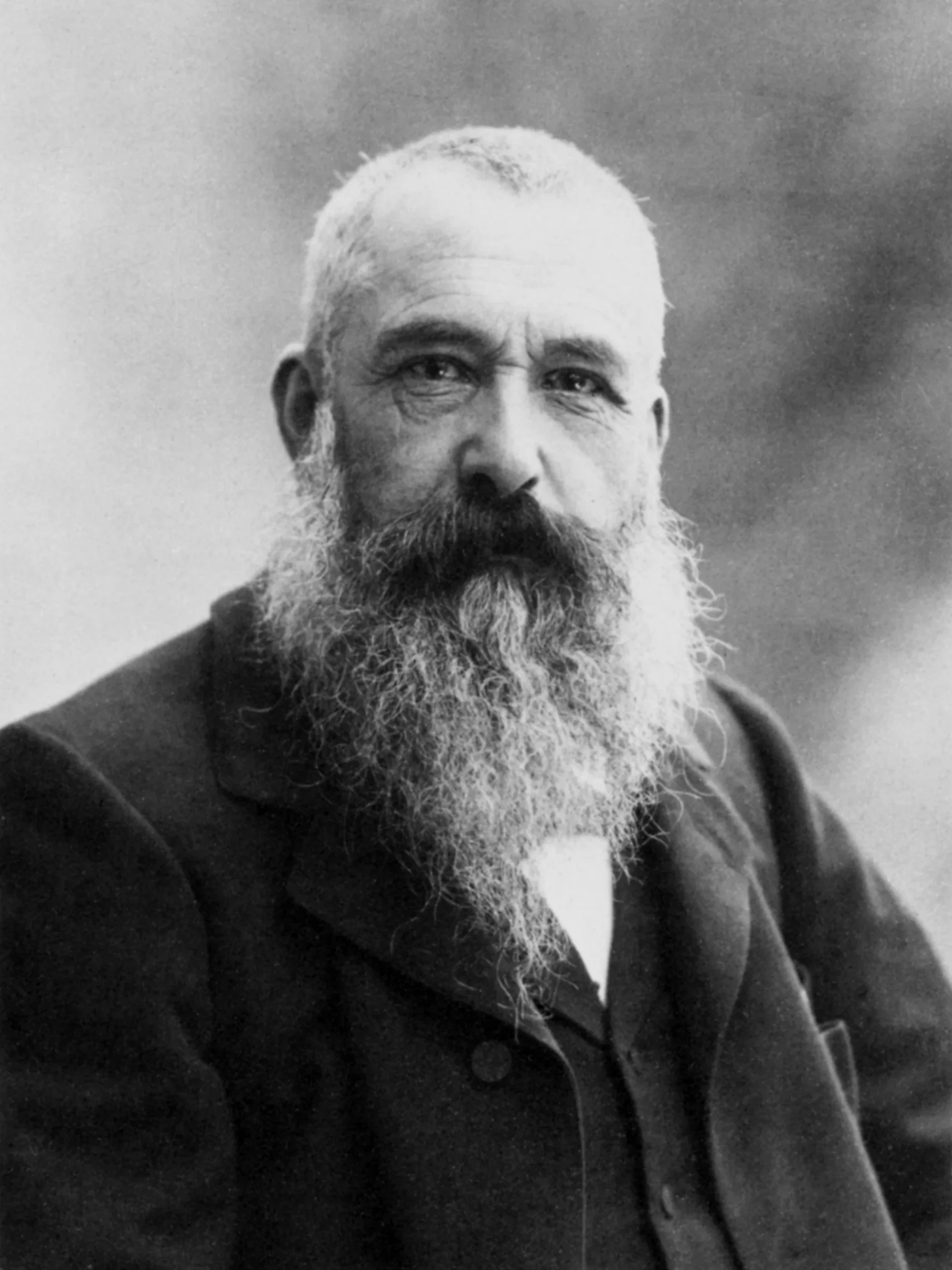Claude Monet, born on November 14, 1840, in Paris, France, is a celebrated figure whose revolutionary approach to painting laid the groundwork for the Impressionist movement. Known for his innovative use of light, color, and brushwork, Monet’s work continues to inspire and influence artists around the globe.
Early Life and Education
Claude Monet was born to a middle-class family in Paris and grew up in Le Havre, Normandy. His early interest in drawing was evident, and by age 15, he had gained some notoriety for his charcoal caricatures. His mother, Louise, supported his artistic pursuits, while his father, Adolphe, hoped he would go into the family grocery business.
Monet’s journey into the art world began earnestly when he met Eugène Boudin in 1858. Boudin, a local landscape artist, introduced Monet to plein air (outdoor) painting. This technique profoundly influenced Monet’s future works, encouraging him to capture natural light and landscapes with a fresh and spontaneous approach.
Career Beginnings
Monet moved to Paris in 1862 to study art and joined the studio of Charles Gleyre. It was here that he met fellow artists Pierre-Auguste Renoir, Alfred Sisley, and Frédéric Bazille. These friendships fostered a collaborative environment that nurtured their collective desire to challenge traditional artistic conventions.
Monet’s early career was marked by struggle and experimentation. He often faced financial difficulties and criticism from the conservative art establishment. Despite these challenges, Monet remained committed to his vision, often seeking inspiration in the French countryside.
The Birth of Impressionism
The breakthrough for Monet and his contemporaries came in 1874 when they organized an independent exhibition, bypassing the restrictive Paris Salon. At this exhibition, Monet’s painting “Impression, Sunrise” was displayed. A critic’s derisive use of the term “Impressionists” inadvertently named the movement. Monet’s bold use of color, light, and loose brushwork in this painting encapsulated the essence of Impressionism, capturing the transient beauty of a moment.
Artistic Innovations
Monet’s dedication to capturing the essence of a scene led him to develop various innovative techniques. His series paintings, such as “Haystacks,” “Rouen Cathedral,” and “Water Lilies,” showcased his fascination with the changing effects of light and atmosphere. By painting the same subject under different conditions, Monet revealed the transient nature of reality.
The “Water Lilies” series, created in his later years, stands as one of his most iconic achievements. Monet’s garden in Giverny, where he lived from 1883 until his death, provided the inspiration for these works. The water garden, with its Japanese bridge and vibrant flora, became a living canvas for Monet’s exploration of color and reflection.
Personal Struggles and Triumphs
Despite his success, Monet faced personal and professional challenges. The death of his first wife, Camille, in 1879, deeply affected him, and financial difficulties and health problems also plagued his career. However, Monet’s unwavering commitment to his art never faltered.
Monet’s perseverance eventually paid off. By the 1890s, he had achieved recognition and financial stability. His home in Giverny became a hub for artists, critics, and admirers. Monet’s influence extended beyond his lifetime, shaping the course of modern art.
Legacy
Claude Monet’s legacy is undeniable. His innovative approach to painting paved the way for subsequent movements such as Post-Impressionism and Abstract Expressionism. Monet’s ability to capture the ephemeral beauty of nature resonates with viewers, transcending time and place.
The Musée Marmottan Monet in Paris houses the largest collection of Monet’s works, offering visitors a comprehensive view of his artistic evolution. The Musée de l’Orangerie, also in Paris, is home to the monumental “Water Lilies” murals, providing an immersive experience of Monet’s vision.
Monet’s impact extends beyond the art world. His work has inspired literature, music, and even fashion. The principles of Impressionism continue to influence contemporary artists, reminding us of the importance of embracing innovation and challenging convention.
Conclusion
Claude Monet’s contributions to the art world are monumental. His visionary approach and dedication to capturing the fleeting beauty of nature have left an indelible mark on the history of art. Through his innovative techniques and series paintings, Monet taught us to see the world with new eyes, appreciating the transient moments that make life so beautiful. His legacy continues to inspire artists and art lovers, ensuring that the master of Impressionism will always be remembered.



